The Location of Ditherington Mill
Image: View of Ditherington Mill showing the Shropshire Canal and canal bridge in the foreground from an early 20th century photograph. The Canal was opened in 1797 and it fell into disuse in about 1930. It was officially closed in 1944. 5
Image from: Shropshire Archives
In 1796 John Marshall (1765-1845) and the brothers Thomas and Benjamin Benyon purchased a seven acre site in the hamlet of Ditherington within the suburb of Castle Foregate on the outskirts of Shrewsbury. Benjamin Benyon wanted to return from Leeds to his native town and the partners saw an opportunity to build a factory to twist thread in Shrewsbury. The nearby carpet weavers in Bridgnorth and Kidderminster provided a market for tow yarns, a by-product of thread-making from the mill.
The site was well-chosen. It stood close to the Bagley Brook which provided a water supply and it was only a few hundred yards from port facilities on the River Severn. Ditherington was also on a turnpike route from Shrewsbury to Whitchurch and Market Drayton. These means of transporting goods would allow raw materials and finished products to be moved to and from the factory. Moreover, the factory was built next to the route of the Shrewsbury Canal which had been authorised in 1793 by an Act of Parliament to enable coal to be moved from Oakengates to Shrewsbury more easily than by horse-drawn wagon along the Holyhead Road. The canal was opened in January 1797 and coal could be unloaded directly into the engine house at Ditherington Mill. The subscribers to the canal included local landowners, industrialists and professional men. They included Earl Gower, the industrialists John Wilkinson and William, Richard and Joseph Reynolds and Dr Robert Waring Darwin, a son of Erasmus Darwin, the father of Charles Darwin and a childhood friend of a partner in the Ditherington enterprise, Charles Woolley Bage.6
6 Trinder, op. cit., pp. 204-205, W G Rimmer, The Marshalls of Leeds Flax-Spinners 1788-1886 (Cambridge, 1960), p 54.
« Previous in this sectionNext in this section »Continue browsing this section
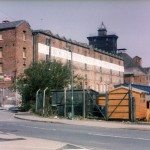 Charles Bage, the Flax Industry and Shrewsbury’s Iron-Framed Mills
Charles Bage, the Flax Industry and Shrewsbury’s Iron-Framed Mills
 Shrewsbury’s Industrial Context
Shrewsbury’s Industrial Context
 The Location of Ditherington Mill
The Location of Ditherington Mill
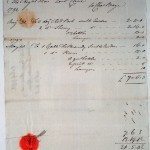 Bill for the supply of liquor from Charles Bage to Lord Clive 1792
Bill for the supply of liquor from Charles Bage to Lord Clive 1792
 Charles Bage and Iron Construction
Charles Bage and Iron Construction
 Charles Bage: Business and Local Affairs
Charles Bage: Business and Local Affairs
 Thomas and Benjamin Benyon
Thomas and Benjamin Benyon
 John Marshall
John Marshall
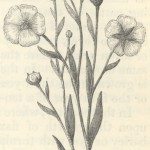 Growing and Preparing Flax
Growing and Preparing Flax
 Processing and Spinning Flax
Processing and Spinning Flax
 Ditherington Flax Mill
Ditherington Flax Mill
 Ditherington Mill: Steam Power
Ditherington Mill: Steam Power
 Ditherington Mill: Steam Power
Ditherington Mill: Steam Power
 Castlefields Mill: Origins
Castlefields Mill: Origins
 Castlefields Mill: Steam Power
Castlefields Mill: Steam Power
 Castlefields Mill: the Flax Warehouse
Castlefields Mill: the Flax Warehouse
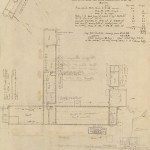 Castlefields Mill: Gas Lighting
Castlefields Mill: Gas Lighting
 Castlefields Mill: Gas Lighting
Castlefields Mill: Gas Lighting
 Castlefields Mill: Sale and Demolition
Castlefields Mill: Sale and Demolition
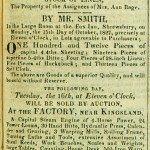 Kingsland Mill
Kingsland Mill






